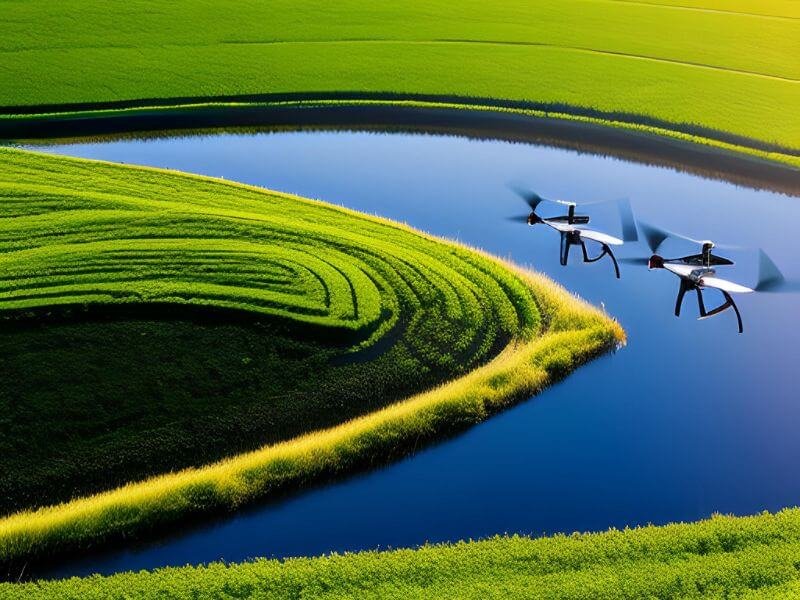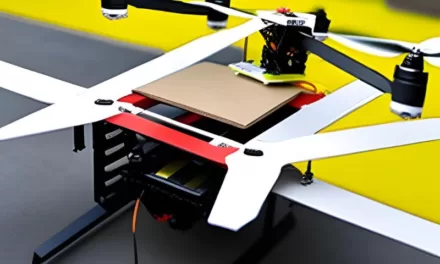Technology is revolutionizing the way farmers operate in modern agriculture. Since, the use of drones for agriculture is one of the most intriguing breakthroughs in this industry. In addition, these unmanned aerial vehicles have several applications in agriculture, assisting farmers in increasing agricultural yield and productivity.
In this blog article, we will look at the intriguing world of agricultural drones and how they are changing the way crops are cultivated. However, Drones provide novel answers to farmers’ concerns, from crop monitoring and precision agriculture techniques to irrigation and spraying. Let’s dig in and discover drones’ enormous potential for increasing crop yield!
Challenges in Agriculture | Drones Transforming Agriculture | Benefits of Drones for Agriculture

Understanding the Challenges in Agriculture
Before delving into the influence of drones, it’s critical to understand the difficulties farmers confront when it comes to maximizing agricultural productivity. Farmers face a variety of challenges, ranging from unpredictable weather to pest infestations, that can have a substantial influence on their crops. Addressing these issues is critical for long-term agricultural and food security.
How Drones are Transforming Agriculture?
Agricultural drones, often known as UAVs (Unmanned Aerial Vehicles), have developed into powerful agricultural instruments. These drones have improved features and capabilities that make them invaluable to farmers. Let’s have a look at how drones are revolutionizing agriculture and aiding farmers in a variety of ways.
Crop Management and Monitoring
Since, Crop monitoring is critical for ensuring optimal development and health. Drones with high-resolution cameras and sensors may capture detailed photographs and collect crop data. This information is useful for understanding plant health, growth trends, and nutrient deficits. Based on this data, farmers may make informed decisions about irrigation, fertilization, and insect management, resulting in healthier crops and higher yields.
Precision Agriculture Methods
On the other hand, Precision agriculture is a farming method that uses data-driven technologies to optimize crop yield. Drones contribute significantly to precision agriculture by delivering precise field mapping and analysis.
Sililarly, Drones provide accurate maps of soil composition, moisture levels, and crop health by flying over fields and collecting data. Farmers can then modify their farming practices to apply resources precisely where they are needed, resulting in increased efficiency and crop yields.
Spraying and irrigation
Meanwhile, Effective irrigation and precision fertilizer and pesticide spraying are critical for crop health and productivity. Drones outfitted with innovative spraying systems can precisely apply these compounds, decreasing waste and environmental effects.
Again, Drones may also monitor soil moisture levels and detect areas that need irrigation, ensuring that crops get enough water without being over- or underwatered.
Benefits of Drone Technology in Agriculture
Drones in agriculture provide numerous advantages to farmers. Let’s look at some of the primary benefits that drones provide.
Increased Productivity and Efficiency
In reality, Drones save farmers valuable time by automating formerly labor-intensive operations. Drones increase data collection by covering huge regions quickly, helping farmers make faster and more informed decisions. This improved efficiency leads to increased productivity and crop management.
Cost savings and resource optimization
Likewise, Farmers may dramatically reduce labor and machinery costs by deploying drones. Drones can cover large regions in a fraction of the time that manual labor would take. Furthermore, with exact data on crop health and nutrient requirements, farmers can optimize fertilizer, herbicide, and water use, decreasing waste and expenses.
Drones for Agriculture: Successful Applications
Drones have already demonstrated their efficacy in a variety of agricultural applications. Let’s look at some of the successful drone applications and how they help farmers.
Crop Health Evaluation and Disease Detection
In addition, Drones, with their airborne viewpoint and high-resolution sensors, can detect crop diseases, pests, and nutrient deficits early on. Meanwhile, this early diagnosis enables farmers to execute targeted interventions, such as precision pesticide application or nutritional supplementation, reducing disease spread and crop losses.
Yield Estimation and Crop Mapping
On the other hand, Drones with advanced imaging capabilities may capture detailed photographs of crops, allowing farmers to generate accurate maps of their fields. These maps provide useful information about crop development patterns and yield variances. Farmers may more correctly estimate crop yields, arrange harvest timetables, and make educated storage and distribution decisions by analyzing this data.
Herd Management and Livestock Monitoring
Similarly, Drones can be used for livestock surveillance and herd management, in addition to crop monitoring. Farmers can study animal behavior, monitor grazing patterns, and detect symptoms of distress or illness by flying drones over meadows and livestock fences. This information assists farmers in ensuring the health of their animals and optimizing their feeding and breeding practices.
Environmental Monitoring and Remote Sensing
Moreover, Sensor-equipped drones can monitor soil moisture, temperature, and quality. Farmers acquire significant insights into the environmental elements that affect crop growth by collecting this data. This data enables them to make data-driven decisions about irrigation, soil management, and crop selection for specific areas.
Overcoming Obstacles and Adoption Roadblocks
While there are apparent advantages to employing drones in agriculture, there are still hurdles and barriers to general adoption. Let’s look at some of these issues and their potential remedies.
Considerations for Regulatory and Legal Compliance
In fact, Drone use in agriculture is governed by rules and regulations. Farmers must become acquainted with the rules and receive the relevant licenses or permits to operate drones. It is critical to stay up-to-date on changing legislation in order to assure compliance and avoid penalties.
Limitations and Solutions in Technology
However, Drones have restrictions, such as short battery life and restricted flying endurance. However, technical progress is always resolving these concerns. Drones are becoming more efficient and viable for agricultural uses as battery technology, flight range, and cargo capacity improve.
Drones for Agriculture: Integration and Training
Similarly, Integrating drones into existing agricultural management systems might be difficult. Farmers may need to invest in compatible software and gear to smoothly integrate drone data into their workflows. Furthermore, training farmers and operators on how to operate drones properly and analyze the collected data is critical for maximizing the benefits of drone technology in agriculture.
Drones for Agriculture: Future Trends and Outlook
Again, Drones in agriculture have a promising future. Drones will become increasingly potent tools for farmers as drone technology advances and artificial intelligence and machine learning are integrated. Increased automation, increased flight duration, and enhanced data analysis skills will revolutionize how farmers monitor and manage their crops.
Conclusion
Finally, Drones are revolutionizing agriculture by providing farmers with novel ways to increase crop output and productivity. Drones offer a wide range of applications, from crop monitoring and precision agriculture techniques to irrigation management and livestock monitoring. They boost efficiency, cut costs, promote environmental sustainability, and allow for data-driven decision-making.
As technology advances, the use of drones in agriculture is expected to grow. Farmers who can use modern technology to solve problems, optimize resources, and achieve sustainable and lucrative agriculture are living in an exciting time. Accepting drones isn’t simply a step forward; it’s a giant leap toward a brighter future for agriculture.


